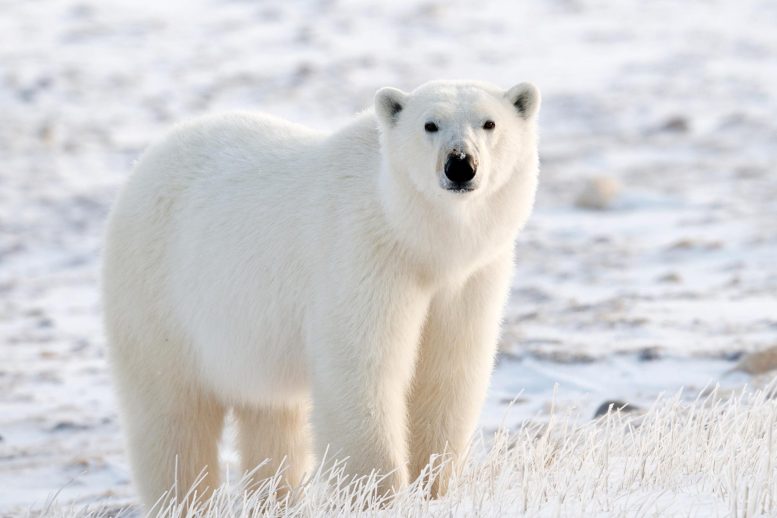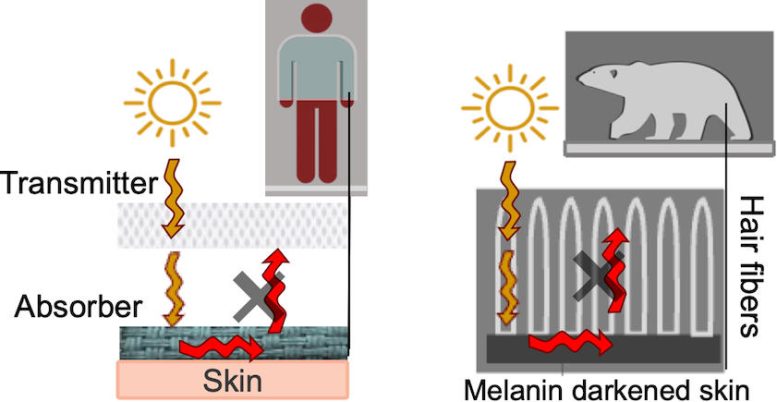
Engineers at the University of Massachusetts Amherst have developed a synthetic textile inspired by polar bear fur, which efficiently conducts light and traps warmth, making it effective in cold environments.
A group of engineers from UMass Amherst has created a bilayered fabric that is 30% lighter than cotton yet provides greater warmth.
Three engineers from the University of Massachusetts Amherst have successfully completed an 80-year endeavor to create a synthetic textile modeled on polar bear fur. The results of their invention have been recently published in the journal ACS Applied Materials and Interfaces, and plans are underway to turn the material into commercially available products.
Polar bears are known to inhabit some of the harshest environments on the planet and they have the ability to endure temperatures as low as -50 Fahrenheit in the Arctic. Despite the numerous adaptations that allow them to survive these extreme conditions, since the 1940s, scientists have been particularly intrigued by one aspect of their anatomy – their fur. The scientific community wondered, how does a polar bear’s fur keep them warm?
Typically, we think that the way to stay warm is to insulate ourselves from the weather. But there’s another way: One of the major discoveries of the last few decades is that many polar animals actively use the sunlight to maintain their temperature, and polar bear fur is a well-known case in point.

Inspired by polar bears, this new textile creates an on-body “greenhouse” effect to keep you warm. Credit: Viola et al., 10.1021/acsami.2c23075
Scientists have known for decades that part of the bears’ secret is their white fur. One might think that black fur would be better at absorbing heat, but it turns out that polar bears’ fur is extremely effective at transmitting solar radiation toward the bears’ skin.
“But the fur is only half the equation,” says the paper’s senior author, Trisha L. Andrew, associate professor of chemistry and adjunct in chemical engineering at UMass Amherst. “The other half is the polar bears’ black skin.”
As Andrew explains it, polar bear fur is essentially a natural fiberoptic, conducting sunlight down to the bears’ skin, which absorbs the light, heating the bear. But the fur is also exceptionally good at preventing the now-warmed skin from radiating out all that hard-won warmth. When the sun shines, it’s like having a thick blanket that warms itself up and then traps that warmth next to your skin.
What Andrew and her team have done is to engineer a bilayer fabric whose top layer is composed of threads that, like polar bear fur, conduct visible light down to the lower layer, which is made of nylon and coated with a dark material called PEDOT. PEDOT, like the polar bears’ skin, warms efficiently.
So efficiently, in fact, that a jacket made of such material is 30% lighter than the same jacket made of cotton yet will keep you comfortable at temperatures 10 degrees Celsius colder than the cotton jacket could handle, as long as the sun is shining or a room is well lit.
“Space heating consumes huge amounts of energy that is mostly fossil fuel-derived,” says Wesley Viola, the paper’s lead author, who completed his Ph.D. in chemical engineering at UMass and is now at Andrew’s startup, Soliyarn, LLC. “While our textile really shines as outerwear on sunny days, the light-heat trapping structure works efficiently enough to imagine using existing indoor lighting to directly heat the body. By focusing energy resources on the ‘personal climate’ around the body, this approach could be far more sustainable than the status quo.”
Reference: “Solar Thermal Textiles for On-Body Radiative Energy Collection Inspired by Polar Animals” by Wesley Viola, Peiyao Zhao and Trisha L. Andre, 5 April 2023, ACS Applied Materials & Interfaces.
DOI: 10.1021/acsami.2c23075
The research, which was supported by the National Science Foundation, is already being applied, and Soliyarn has begun production of the PEDOT-coated cloth.









Warmer than cotton? Big deal. Totally made of plastic, how cliche. People can wear the clothing whilst they go looking to see if any polar bears are still alive.
There you go more synthetic materials that never disappear after you discard them.
I wonder if they researched the possibilities of wool.
The problem isn’t with the invention, it’s with insisting that everything synthetic be turned into a consumer product in order to make a profit. This resource should be far more regulated.
Made of recycled plastic. I prefer goose down.